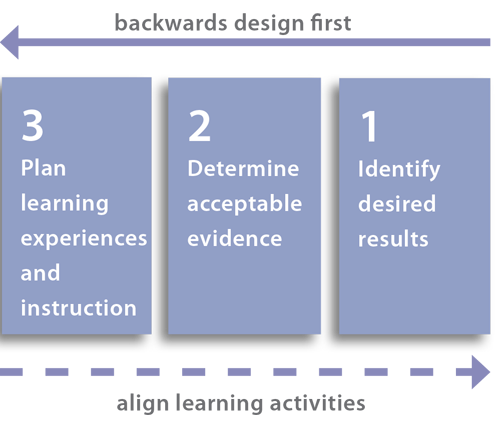In our research of the past several years, we have become intrigued with the myriad ways creative industries outside of architecture have leveraged outcomes to drive successful design.
Since embarking on our journey to rethink the architectural design process in terms of outcomes, we have researched numerous parallel design fields for insights that could help us and our clients do a better job of building consensus and designing for real success. In this note we highlight Wiggins and McTighe’s Understanding by Design, which is an increasingly popular educational framework for designing course curriculum and classroom instruction, where learning outcomes are the drivers of design.
Question 1: “How do you teach for enduring understanding?”
Understanding by Design (UbD) completely inverts the traditional methods of curriculum design by employing the concept of “backwards design,” a framework that focuses first on learning outcomes and the core question: “what do we want students to understand?”
In UbD, the first step is to identify the enduring understandings that students will attain when complete (the outcomes); the second step is the design of assessment tools for revealing evidence that understandings have been achieved; and the final step is creating the course curricula and teaching activities that will lead students to the desired outcomes of the course. UbD for the first time offers teachers a clear pathway for linking methods to results by defining the learning goals first:

Question 2 “What does it mean to understand?”
The Backwards Design concept is complemented by another outcome tool: The 6 Facets of Understanding. This is a simple, yet brilliant tool to help students “unpack their thinking.” The 6 Facets are a virtual roadmap of all possible learning outcomes – from the most basic to the most profound. Student proficiency in understanding can be orchestrated along a continuum which builds through successive levels of sophistication. Students can:
explain: accurate reporting
interpret: draw conclusions
apply: transfer to other situations
shift perspective: see other points of view
empathize: appreciate how others feel
be self-aware: see oneself in perspective
Implications for Architecture
The clarity of UbD can be adapted to any physical environment where learning is a core activity. Thus museums, galleries, zoos, and aquariums are prime candidates.
For our Exhibit Master Plan of the New England Aquarium, we addressed their passion for teaching and exciting visitors by introducing a design framework based on 4 Learning Outcomes. Our framework addressed a spectrum of learning styles similar to UbD, and like UbD, provided a backwards roadmap that started with the quality of experience to be advocated at each place in the exhibit path. The design objective was to offer exciting experiences that resonate with different kinds of visitors around these learning pathways:

Emotional/Intuitive
Provide rich experiences that visitors will absorb through their senses.
Cognitive
Provide opportunities for visitor engagement that will increase their knowledge and understanding of marine life.
Empathetic
Through live animal presentations and human interaction, increase the likelihood that visitors will feel empathy for marine life.
Self Aware
Provide experiences that motivate and inspire visitors to become aware of their individual impacts on aquatic environments.
For a deeper dive into Understanding by Design, checkout http://www.ubdexchange.org/